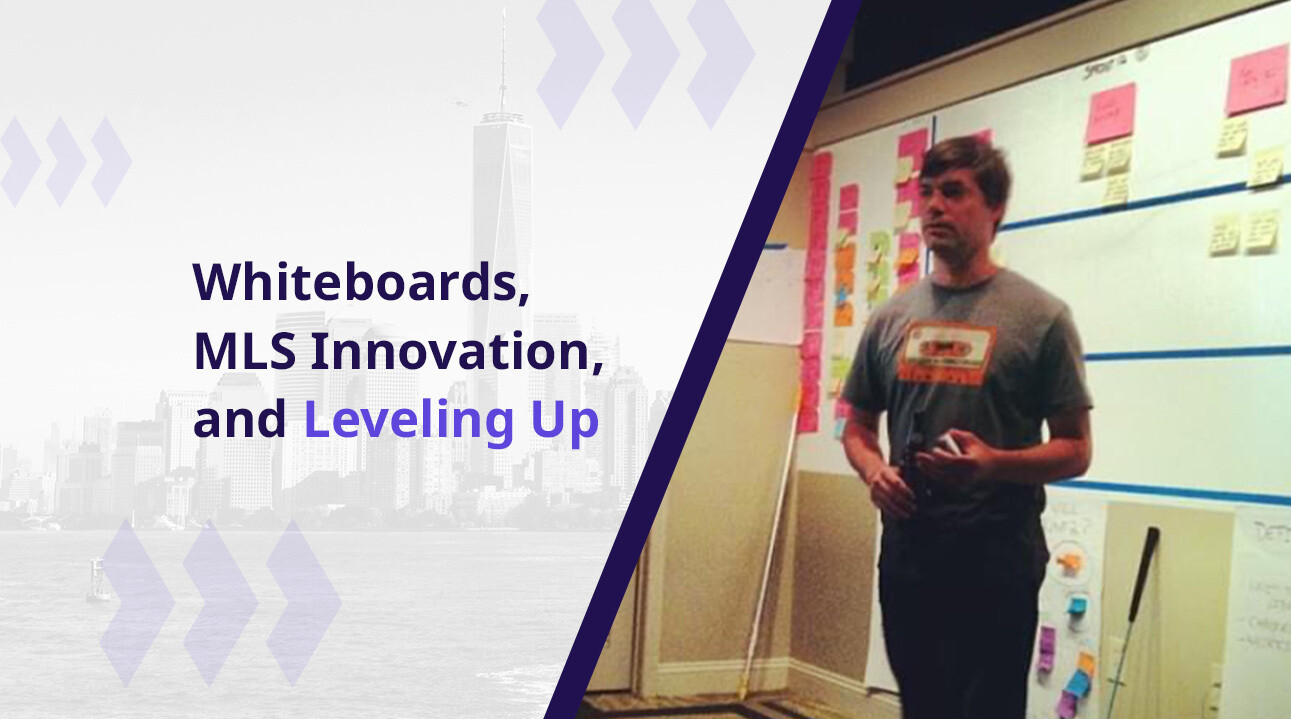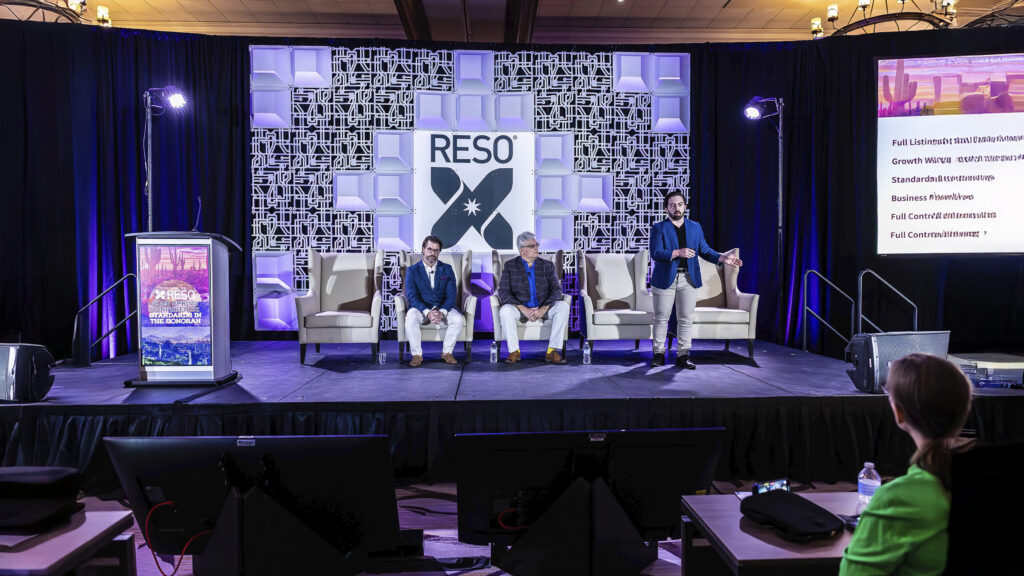The year is 2012. Thirty-eight year old me is the Chief Marketing Officer at Solid Earth, the MLS software provider where I’d started my career twelve years earlier. I’m standing in the back conference area in our office in Huntsville, Alabama, in front of our giant kanban board; the billboard-sized wall where dev sprints were planned, posted, and meticulously tracked.
I’m addressing our development team, giving an update on client feedback on feature requirements for Spring, the mobile-first, listing search and maintenance product we’d started working on to replace List-It, our aging MLS platform.
Spring was an incredibly ambitious undertaking. Despite its age, List-It was well-established and popular among our ~60,000 agent users. From LA’s South Bay to Florida’s panhandle to the greater NYC market, List-It was on par with any national MLS listing platform at the time. Things were stable among our client base, but it was clear that disruption was imminent in the MLS industry, or so we thought.
The proliferation of mobile computing, and the steady chirping of our most demanding clients, told us that change was coming and we weren’t well-positioned. List-It simply didn’t work on mobile and it was a competitive gap. A responsive platform to replace List-It was a strategic need. After much consideration, we made the decision to meet this challenge aggressively. The more we planned, the more we loved the idea. Spring became a symbolic rallying point; an opportunity to level up our software, and the company as a whole.
The investment in Spring was significant. We brought in new hires. We moved to a larger, updated office space. We adopted the Agile Development methodology to maximize our dev work and get Spring to market quickly. With new cubicles, new faces, and a new optimism to re-establish our position as industry innovators, work on Spring began in early 2011.
Then one morning, Matt (Solid Earth’s Co-founder, CEO, and also my older brother) asked me to meet for coffee in our usual downtown spot. Expecting a conversation about the upcoming NAR Midyear Conference, Matt instead told me he’d been diagnosed with a very rare form of cancer.
I remember everything about that moment. In Matt’s usual even and measured way, he explained what had happened the day before. A routine eye exam had turned serious. He was already set to see a specialist at Vanderbilt and then likely onto Philadelphia for further evaluation. The survival rate wasn’t promising. I asked no questions. I just listened, stunned.
He quickly shifted the conversation to the company. We discussed what needed to be done as he focused on his treatment. His availability over the next several months was going to be unpredictable. He’d remain as involved as he could, but I needed to step up. We discussed how I’d deal with our clients; who was at-risk, who would need special attention.
Managing existing business would be my primary focus. With news that he was stepping away, it was critical that our customers know that we remained stable and confident. I would immediately get on the road and become the face of the company. Expiring contracts had to renew. New contracts had to be won. Conferences needed to be attended. Sponsorships fulfilled. The world was still turning and we couldn’t afford to lose a step.
And then there was Spring. Our new great hope, just emerging in wireframes. Suddenly, our leadership team and I were handed a new sense of urgency to see the project was a success, but where once there was optimism, it was now something different. We were all scared for Matt. Scared for each other. Work on Spring shifted into a higher gear because it had become even more important.
The following several months were a blur. I remember lots of airports, conference rooms, and lobby bars, as I fielded questions about Matt and the fate of the company – most of which were tactful and kind. Some not. It was a difficult time, but as things with both Matt’s condition and Solid Earth began to stabilize, I settled into a quiet confidence.
Our daily standups (thank you, Agile) made for a much needed change in culture and velocity. We didn’t always like each other, but we got things done on an epic scale and with full transparency and accountability throughout the organization. We were running at a pace that I had never experienced. We lost some good people during this time, but as old roles evolved or disappeared entirely, we grew in overall ability and focus. By Summer, Spring was taking shape and I was preparing for early demos with clients.
Some important things happened during the fast and furious Spring development process.
Even in 2012 we knew that the old way of doing things wasn’t going to work long-term. List-It was dated technology based on dated principles. Spring was designed based on this understanding. We decided to abandon the idea that a single platform could accommodate every need of every user. We chose to focus on core MLS features, which led to a spirited set of debates, both internally and among our MLS clients, about what “core MLS” really meant.
Spring gave us a chance to play around with this idea. The whiteboard in our conference room was a daily mess of notes and brainstorm scribbling. What should a modern MLS look like? Why are agent user interfaces ugly and consumer user interfaces beautiful? Aren’t agents also consumers? What features are mandatory and what should be optional, or even phased out completely? How can we reimagine the UI/UX while not scaring off our clients? We had given ourselves the opportunity to start over again – to reimagine MLS from the ground up.
It was in these meetings that the leadership team really started to dream big. Honestly, it got a bit out of hand at times, but it was a blast! In the end, however, most of these concepts remained just that; hand-written notes on that conference room whiteboard. And as Matt Cohen famously told me after I walked off the stage at the 2012 Clareity Conference having just discussed the merits of Spring and the philosophy behind it, “Congratulations Bill, you’ve leapfrogged your competition. You’ve also leapfrogged your customer.”
That comment was remarkably prescient. Ultimately, Spring didn’t find the instant foothold we had anticipated. Our predictions of a tectonic shift in the industry through mobile computing didn’t materialize on the expected timeline. Change is hard. Change is risky. Even when change offers obvious benefits, it’s still incredibly difficult to push innovation across the chasm, particularly in our industry.
However, Spring is still a success story. Sold and repurposed, that code still exists, albeit not in the form in which it was initially intended. More salient to this story is that the revolutionary ideas we left on that now infamous whiteboard back in Huntsville, AL are not only very much alive and well, but beginning to see the light of day.
Another twelve years have passed and the concepts around a front-end-of-choice environment fueled by an independent MLS backend are finally beginning to materialize more broadly. My brother Matt, fully recovered and thriving as Executive Director at Triangle MLS in North Carolina, is among a small group of bold pioneers offering multiple UI/UX options within a single MLS, which based on the work done with Spring should come as no surprise. Matt is doing the important work; exactly what the industry needs at exactly the right time, despite the considerable friction involved. Again, change is hard.
SourceRE is another significant development experience, pushing the innovation even further. With front-end-of-choice comes the need for an independent, exceptionally nimble, and versatile database as the backbone. This was obvious from our earliest dev meetings. Even then (and thanks in no small part to RESO), we all saw the industry was starving for a much more efficient way to move data – speedy plumbing that would fuel a new generation of products, critical initiatives like MLS regionalization, datashares, and a whole lot more.
I’m proud to have been part of the Spring leadership team. I’m even more proud to lead SourceRE, bringing the best of that experience, along with powerful innovations, to an industry that’s finally ready for change. This old photo of my thirty-eight-year-old self reminds me of that critically important and remarkably stressful, yet rewarding, time.
A few weeks ago, I spoke on the “Next Generation of MLS Databases” panel at NAR Midyear in Washington, DC. The packed room confirmed that while data independence isn’t new, the timing is finally right. Technology and MLSs are ready, but politics remain the biggest barrier. We ran over time, addressing several overwhelmingly supportive questions and comments from the audience.
A powerful movement is emerging. MLSs are embracing a vision of independence and choice, seen by many as revolutionary. For those of us who’ve championed this cause for years, we know these ideas aren’t new. However, it’s clear that the moment has arrived, and data independence is now more crucial than ever.



.jpg)